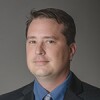Helge Hove Haldorsen set the tone for SPE’s 2015 HSE conference in March at the meeting’s first keynote luncheon.
“I have an intense personal commitment to making E&P safe and sustainable,” the 2015 SPE president said.
Nearly 350 people gathered at the Omni Interlocken Resort outside of Denver for the 2015 SPE E&P Health, Safety, Security, and Environmental Conference—Americas. The conference carried the theme “Striving for HSE Excellence—It Takes All of Us.”
In his speech, Haldorsen pointed out that safety is a group effort. “We don’t compete on safety. We collaborate,” he said. “There’s lots of challenges. There are no easy buttons. But, I think, when we come together and talk about our various innovations and what we can do, sharing and collaborating … we’re going to come up with great things that take us to 2.0.”
After summing up the petroleum industry from exploration to selling the product to refineries, Haldorsen said, “E&P 2.0 means we do this smarter, faster, cheaper, more sustainable. This is the challenge for E&P. This is what we have to do.”
The conference, the 12th of its kind for SPE and the first to be held outside of Texas, celebrated several firsts and included new levels of engagement. It ended on 18 March with an interactive closing session. Before each plenary session and the closing session, attendees used remote voting devices to respond to questions about the content of the sessions. The responses drove the discussion at the closing session.
After determining the four most popular subjects—collaboration on safety throughout the industry, whether the price of oil will affect how HSE is considered, finding a middle ground for discussions, and sharing lessons learned—attendees gathered at tables dedicated to each subject. Chosen table leaders then presented the results of the discussions.
The closing session was moderated by Jack Hinton from Baker Hughes. “As I walked around, listening to the different tables, the intensity and the conviction, the importance, that I was hearing was absolutely incredible,” he said.
The interactive closing session was “in keeping with our belief that we had as a program committee,” Hinton said.
“We wanted to change the dynamic about the typical conference, where people just come and you sit and you listen.”
The conference also changed the typical conference dynamic by holding a Student Challenge competition, modeled after the PetroBowl held at SPE’s Annual Technical Conference and Exhibition, and a movie night (see page 142, SPE News).
The conference was punctuated with three plenary sessions, one for each day.
The first plenary session focused on the industry’s environmental footprint and consisted of three speakers: Jim Sewell with Shell E&P, Joseph Ryan with the University of Colorado Boulder, and Jon Goldstein with the Environmental Defense Fund.
A major point of discussion at the session was the effect of methane on the environment and the industry’s role in methane emissions.
Ryan showed a map that overlaid locations of high methane emissions with locations of coal formations. “A lot of the methane that has shown up in water wells … is really associated with these relatively shallow coal formations.”
Goldstein also addressed the problem of methane, noting that methane has a greater greenhouse-gas effect than carbon dioxide in the early years after release.
“You can think of methane as the other white meat. Carbon dioxide is the primary greenhouse gas you hear about, but methane is No. 2 in many ways. … It’s a far more potent greenhouse gas pound for pound in the early years. Methane is more than 80 times more potent in the first 20 years.”

The second plenary session focused on safety and the goal of making it personal. The speakers were Warren Hubler with Helmerich and Payne International Drilling, Cheryl Mackenzie with the US Chemical Safety Board, and Mike West with BP America.
Hubler shined light on the personal aspect of safety with an emotional story of a boy who lost his father to an oil rig accident. After the funeral, the boy approached Hubler and asked why his father died. “How do we answer that question to a little boy, an 8-year-old boy, who has just lost his coach, his mentor, his tutor, his hero in life? Ladies and gentlemen, there is no adequate answer to that question, and there never will be. That needs to be a source of motivation for every one of us in this room.”
The final plenary session concerned unconventional resources. Four speakers—Dave Neslin with Davis Graham and Stubbs, Michael Freeman with Earthjustice, Patty Limerick from the University of Colorado Boulder, and Perry Pearce with ConocoPhillips—each offered their perspectives. The perspectives were those of a regulator, a conservation group, a shuttle diplomat, and an operator, respectively. The speakers all touched on the public’s perception of the work done by the industry.
“We should be educating people about energy,” Freeman said. “Where does our energy come from? What are the choices? What are the issues? I think we would all agree it would only be a good thing if people knew more about those subjects.”
Limerick summed up the essence of the discussion by reciting, of course, a limerick poem she wrote:
“Knowledge is tragically lacking
On the complicated process of fracking.
Convinced they are right,
People rush in to fight.
And no agency regulates yakking.”
The SPE E&P Health, Safety, Security, and Environmental Conference—Americas is held every 2 years. The 2015 conference was held 16–18 March. The next one will be in 2017.


